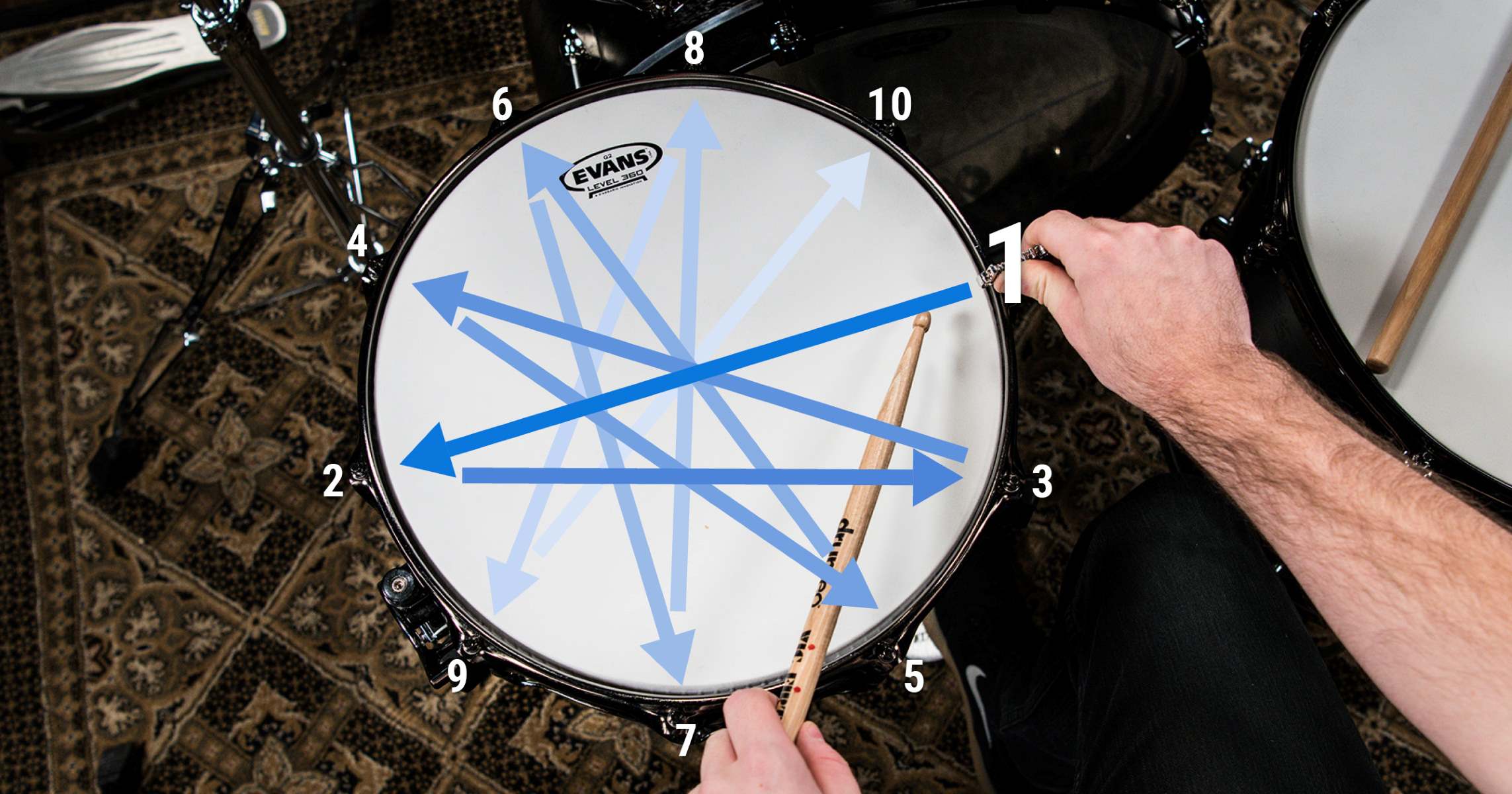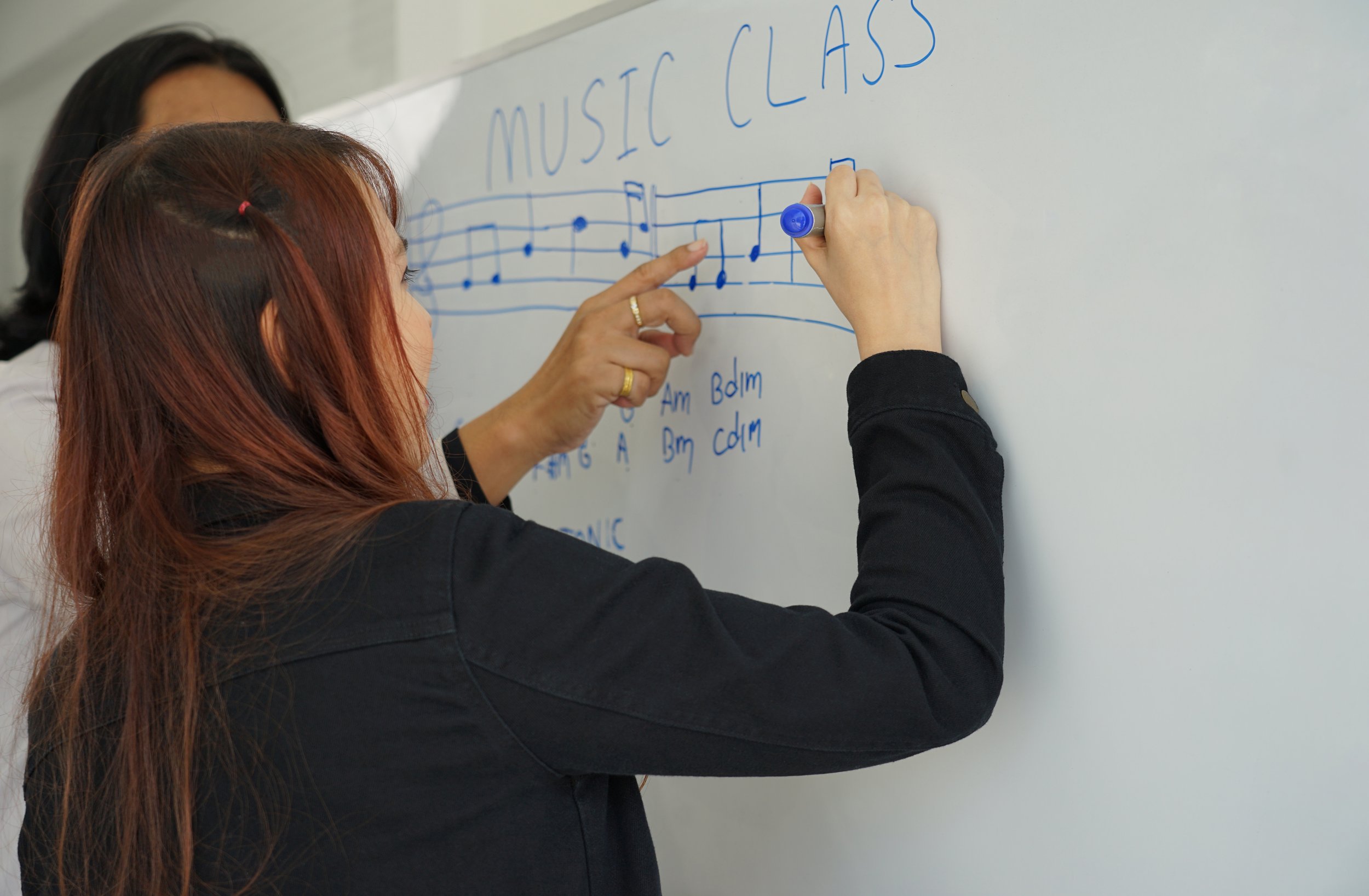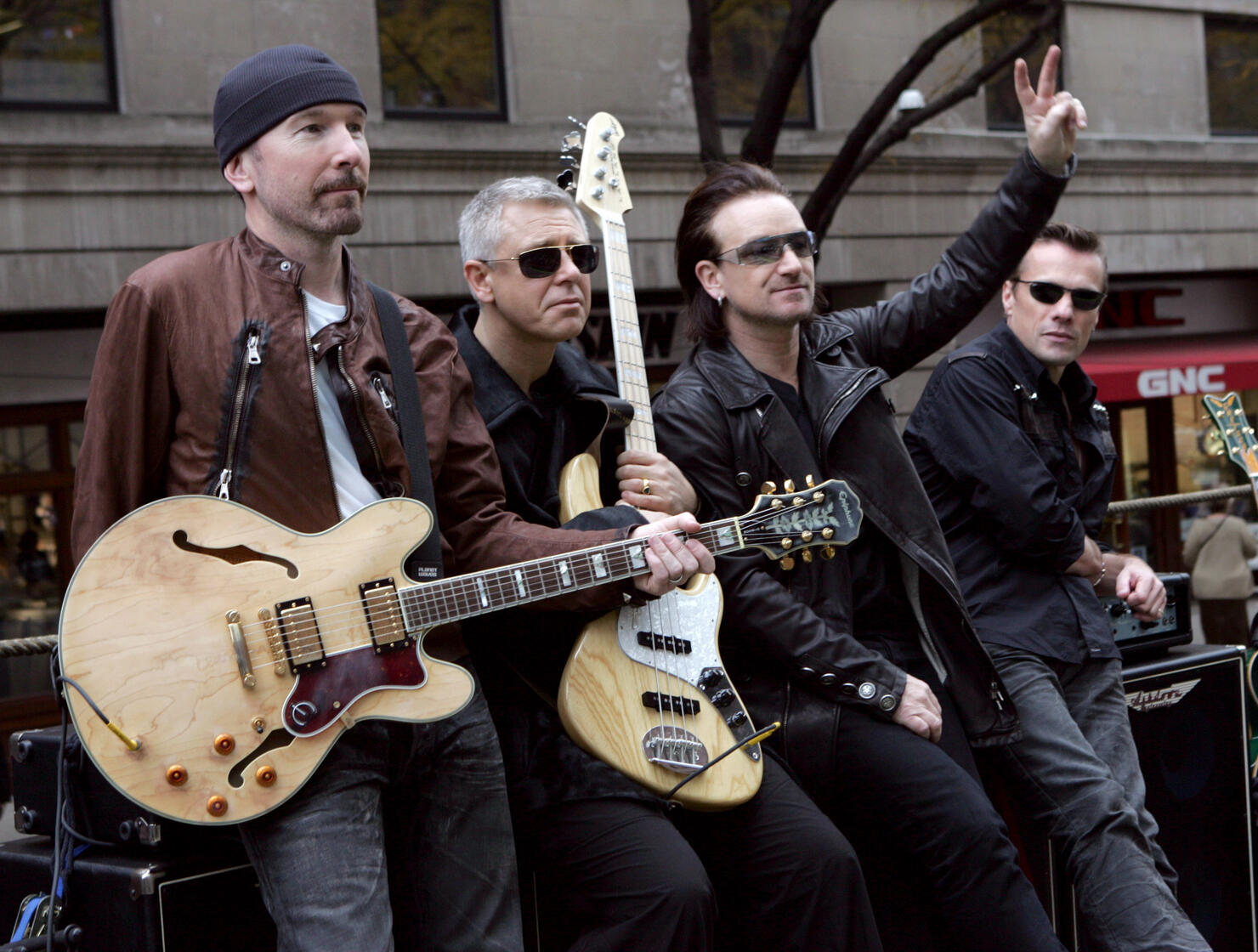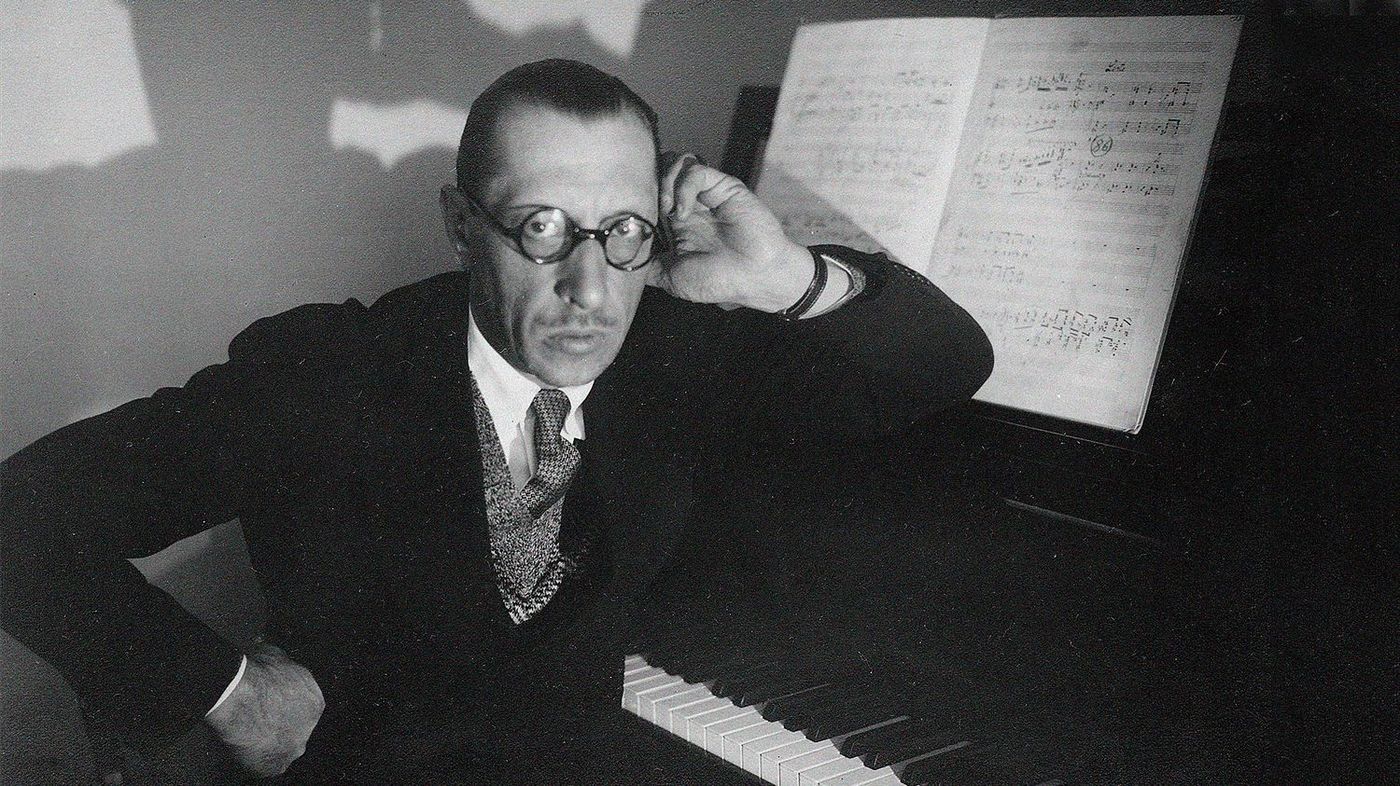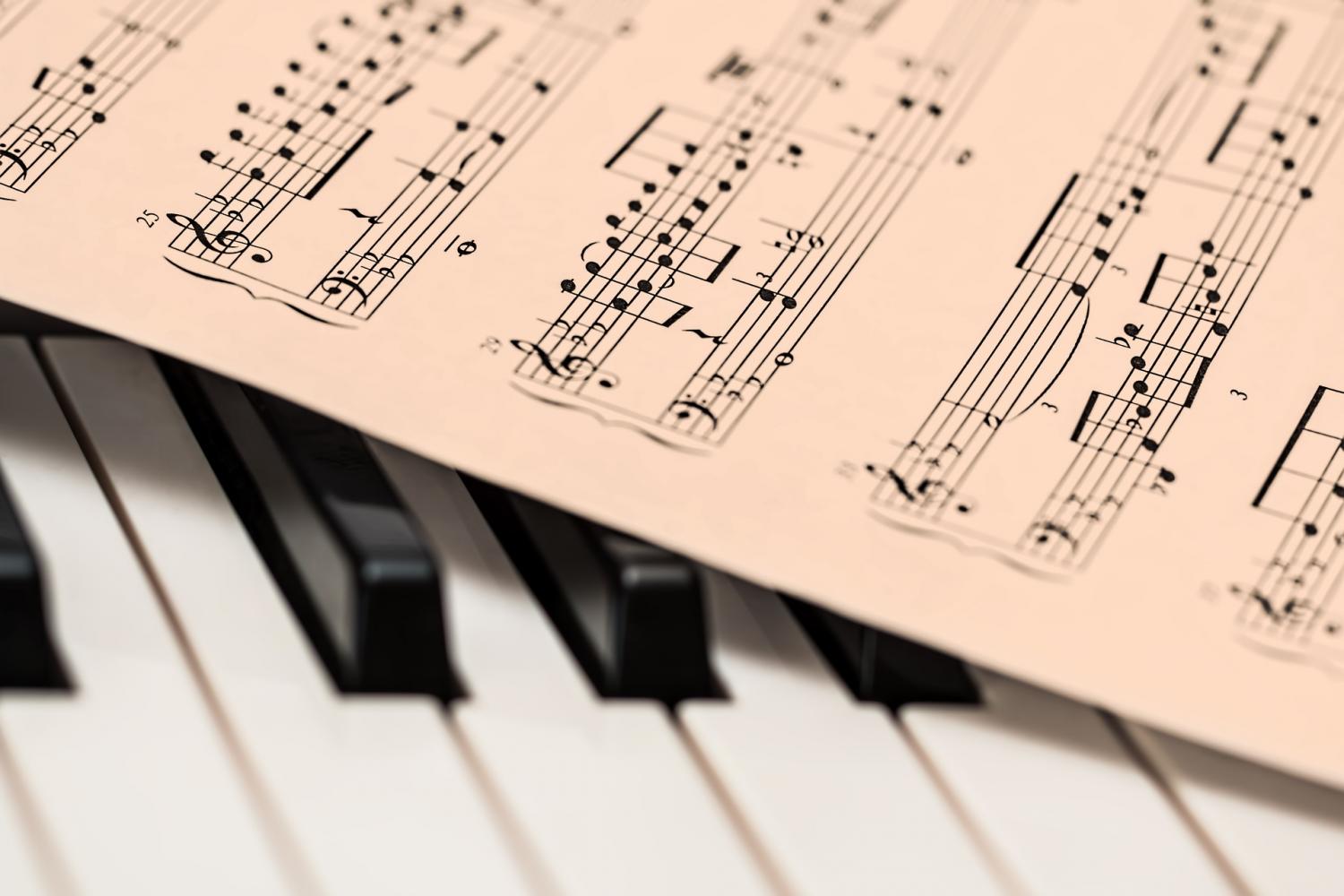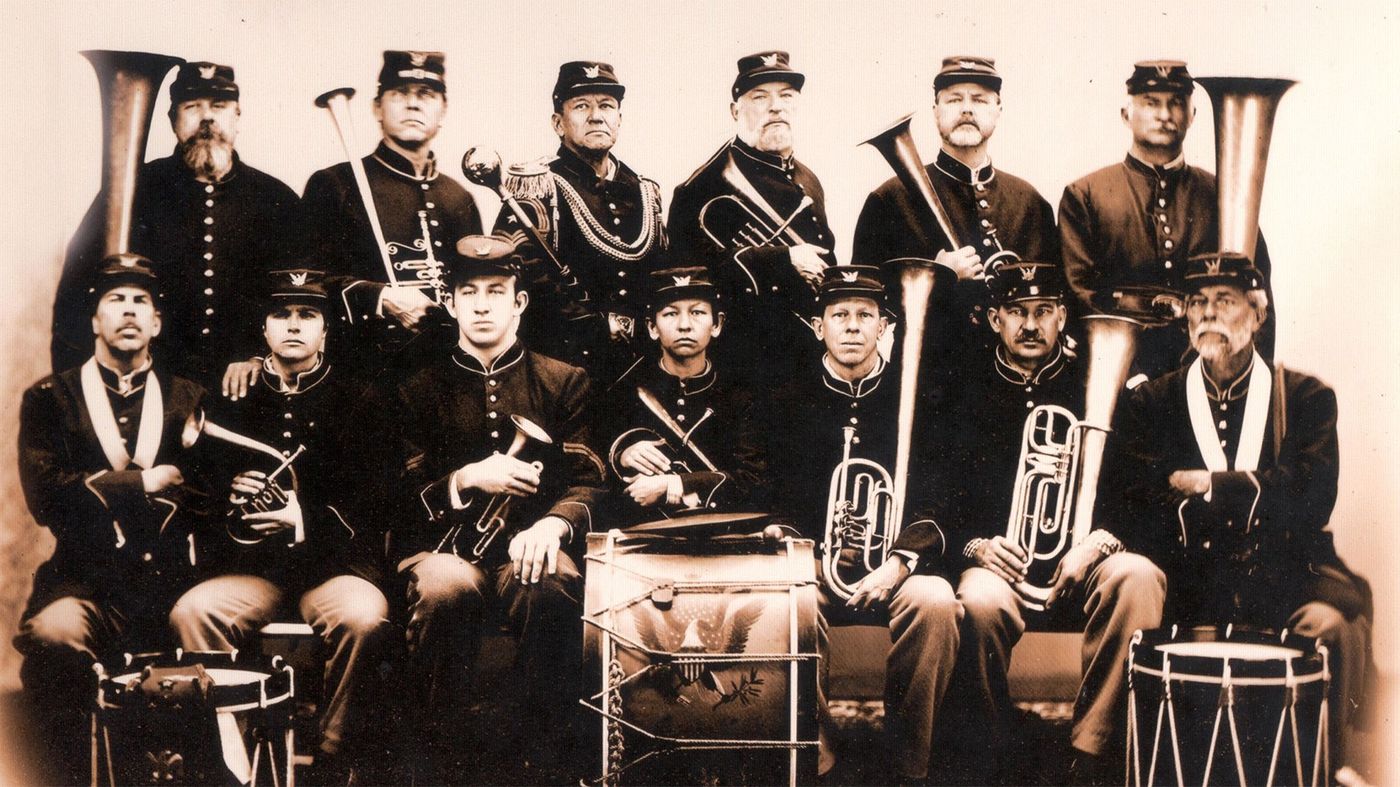Home>Events & Info>Music History>What To Teach In Music History
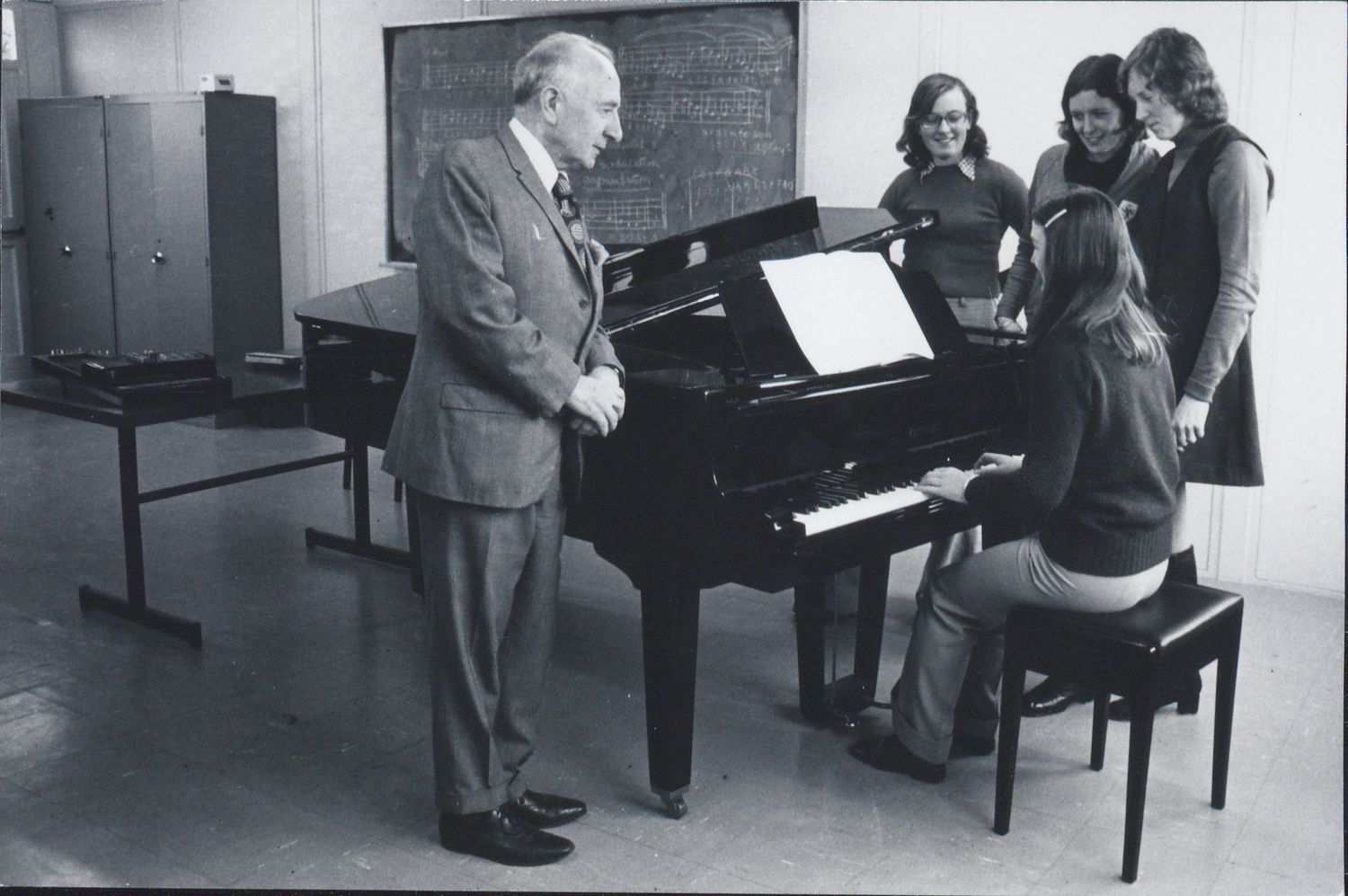

Music History
What To Teach In Music History
Modified: January 22, 2024
Discover the essential topics to cover in music history lessons. Explore key composers, periods, and genres to create a comprehensive music education experience.
(Many of the links in this article redirect to a specific reviewed product. Your purchase of these products through affiliate links helps to generate commission for AudioLover.com, at no extra cost. Learn more)
Table of Contents
- Introduction
- Importance of Music History Education
- Key Topics in Music History
- Early Music Periods
- Medieval Music
- Renaissance Music
- Baroque Music
- Classical Music
- Romantic Music
- Contemporary Music
- Musical Styles and Genres
- Cultural and Social Context of Music
- Notable Composers and Musicians
- Music Movements and Influences
- Music Analysis and Criticism
- Teaching Strategies and Resources
- Assessing Music History Knowledge
- Conclusion
Introduction
Music history is a fascinating subject that delves into the rich and diverse world of music throughout the ages. It explores the development of musical styles, the lives of composers and musicians, and the cultural and social contexts that have influenced and shaped music over time. Teaching music history not only provides students with a deeper appreciation for music but also offers valuable insights into the history of human civilization.
Understanding the evolution of music can provide students with a broader understanding of artistic expression and creativity. It allows them to explore the connections between different musical styles and genres and how they have evolved over time. Additionally, studying music history helps develop critical thinking skills by encouraging students to analyze and interpret music pieces based on their historical context and musical characteristics.
Music history education offers a comprehensive overview of various periods, styles, and influential figures in the history of music. From ancient civilizations to modern-day compositions, the study of music history covers a wide range of topics and provides a holistic understanding of the evolution of music.
This article aims to highlight the key topics to teach in music history, providing an overview of the major periods, musical styles, and important composers and musicians. It will also explore the significance of understanding the cultural and social context of music and the importance of teaching strategies and resources for effective music history education.
By delving into the fascinating world of music history, students can gain a deeper appreciation for the art form and develop a critical understanding of its impact on society. Through the study of music history, we can truly grasp the significance and beauty of music in all its varied forms.
Importance of Music History Education
Music history education plays a crucial role in fostering a deep appreciation for music and its cultural significance. By studying the history of music, students gain insight into the evolution of musical styles, the lives of remarkable composers and musicians, and the societal impact of music throughout history. Here are several reasons why music history education is essential:
- Preserving Cultural Heritage: Music is a reflection of culture and serves as a historical record of society’s values, beliefs, and aspirations. By studying music history, students can gain a deeper understanding of different cultures and their musical traditions. It helps to preserve and celebrate the diverse musical heritage that has shaped our world.
- Developing Critical Listening Skills: Analyzing and interpreting music from different time periods enhances students’ critical listening skills. They learn to identify the unique characteristics of various musical styles and appreciate the technical and artistic elements of compositions. This attentiveness to detail can also be applied to other forms of art and media.
- Understanding Musical Evolution: Music has gone through significant transformations throughout history, influenced by cultural, social, and technological developments. By exploring the evolution of musical styles and genres, students can trace the lineage of their favorite musical genres and better understand how music continues to evolve today.
- Appreciating Musical Diversity: Music history exposes students to a wide range of musical styles, from classical to folk, jazz to rock, and everything in between. This broadens their musical palette and fosters an appreciation for the vast diversity of musical expression across different cultures and time periods.
- Connecting Music to Other Disciplines: Music history intersects with various academic disciplines such as history, literature, sociology, and art. By studying music history, students can explore the connections between music and other areas of study, making interdisciplinary connections and gaining a holistic understanding of human culture and society.
- Fostering Creativity and Inspiration: Learning about the lives and works of influential composers and musicians can inspire students’ own musical creativity. They can draw inspiration from different musical eras and experiment with various styles to create their own unique compositions.
By teaching music history, educators provide students with a well-rounded musical education that encompasses historical, cultural, and creative aspects. It instills a deeper appreciation for music and nurtures a lifelong love of learning and exploring different musical genres and traditions.
Key Topics in Music History
When teaching music history, several key topics should be covered to provide students with a comprehensive understanding of the subject. These topics span various periods, styles, and influential figures in the history of music. Here are some of the key topics that should be included in music history education:
- Early Music Periods: The study of music history often begins with the exploration of early music periods such as Ancient Greek music, Byzantine chant, and Gregorian chant. These early musical traditions laid the foundation for later developments in Western music.
- Medieval Music: Medieval music encompasses a diverse range of styles, including plainchant, organum, and early polyphonic music. Studying this period allows students to understand the influence of the church on music and the rise of polyphony.
- Renaissance Music: The Renaissance period saw significant advancements in music, including the development of new musical forms such as the madrigal and motet. Students can explore the works of renowned composers like Josquin des Prez and Giovanni Palestrina.
- Baroque Music: The Baroque era brought forth elaborate compositions and virtuosic performances. Students can learn about the works of composers like Johann Sebastian Bach, George Frideric Handel, and Antonio Vivaldi, and delve into the intricacies of Baroque music forms such as the fugue and concerto.
- Classical Music: The Classical period introduced a new emphasis on clarity, balance, and symmetry in music. Students can examine the works of musical giants like Wolfgang Amadeus Mozart, Ludwig van Beethoven, and Franz Joseph Haydn. They can also explore the development of musical forms such as the symphony and sonata.
- Romantic Music: The Romantic period is characterized by intense emotion and dramatic expressions in music. Students can explore the works of composers like Frederic Chopin, Franz Schubert, and Pyotr Ilyich Tchaikovsky and understand the influence of romantic ideals on music.
- Contemporary Music: The study of music history should also include an exploration of contemporary music. This encompasses various styles and genres, including jazz, blues, rock, pop, and electronic music. Students can analyze the works of influential contemporary composers and musicians, such as Miles Davis, Bob Dylan, and Steve Reich.
These key topics provide a foundation for understanding the evolution of music and the contributions of various composers and musicians throughout history. They allow students to explore the different musical styles, forms, and genres that have shaped the landscape of music as we know it today.
Early Music Periods
The study of early music periods provides a fascinating glimpse into the origins and development of music. These periods laid the foundation for later musical traditions, influencing and shaping the course of Western music. Here are key early music periods that should be explored in music history education:
- Ancient Greek Music: Ancient Greek music is considered the birthplace of Western music. It was closely intertwined with Greek mythology and drama, with a focus on vocal music accompanied by instruments such as the lyre and aulos. Exploring this period allows students to understand the early concepts of melody, rhythm, and modes that influenced later musical developments.
- Byzantine Chant: The Byzantine Empire had a profound influence on music, particularly through its liturgical chanting. Byzantine chant used specific vocal styles and melodic structures to enhance religious worship. Students can explore the intricate melodies and modal scales of Byzantine chant, understanding its significance in the Eastern Orthodox Church.
- Gregorian Chant: Gregorian chant, named after Pope Gregory I, was the dominant form of liturgical music in the Western Christian Church during the Medieval period. This unaccompanied vocal music drew from ancient Roman and Byzantine musical traditions, characterized by modal melodies and free-flowing rhythms. Studying Gregorian chant provides insights into the religious and cultural significance of music during the Middle Ages.
These early music periods laid the groundwork for the development of musical structures, modes, and notation systems. By delving into the music of ancient Greece, Byzantine Empire, and Gregorian chant, students can appreciate the historical significance of these early music traditions and understand their influence on later musical movements.
Medieval Music
Medieval music is a rich and diverse period in the history of music, spanning roughly from the 9th to the 14th century. It encompasses a variety of musical styles and developments that emerged during the Middle Ages. Exploring medieval music provides students with a deeper understanding of the cultural, religious, and artistic influences of the time. Here are key aspects of medieval music that should be covered in music history education:
- Plainchant: Plainchant, also known as Gregorian chant, was the dominant form of vocal music during the Medieval period. It was monophonic (single melodic line) and used in religious ceremonies. Students can study the structure, modes, and origins of plainchant, as well as the role it played in liturgical services.
- Organum: Organum is a style of early polyphony that emerged in the Medieval period. It involved adding additional melodic voices to the existing plainchant, creating harmony. Students can explore the development of early polyphony and the compositional techniques used in organum.
- Secular Songs: Alongside religious music, the Middle Ages saw the emergence of secular songs, often performed in courts and social gatherings. Students can examine the various forms of medieval secular songs, including troubadour and trouvère songs, as well as the themes and cultural significance behind them.
- Polyphonic Music: Polyphony, or the combination of multiple melodic lines, became more prevalent during the later Medieval period. Students can study the works of composers such as Guillaume de Machaut and Leonin, who made significant contributions to polyphonic music during this era.
- Notation: The development of musical notation in the Medieval period played a crucial role in preserving and transmitting musical works. Students can explore the early forms of notation, such as neumes, and learn how they evolved into more standardized systems.
By delving into the world of medieval music, students gain insight into the cultural and religious practices of the time. They can appreciate the complexity of early polyphony, the significance of plainchant in religious worship, and the emergence of secular music. Studying medieval music helps students understand the foundations upon which later musical styles and compositions were built.
Renaissance Music
Renaissance music marks a period of remarkable artistic and cultural growth that spanned from the 14th to the 17th century in Europe. With its emphasis on humanism and a revival of interest in Greek and Roman arts, the Renaissance period brought about significant developments in music. Exploring Renaissance music in music history education allows students to appreciate the evolving musical styles, forms, and innovations of this fruitful era. Here are key aspects of Renaissance music that should be covered:
- Musical Forms: Renaissance music saw the development of new musical forms, such as the motet, madrigal, mass, and chanson. These forms allowed composers to experiment with polyphony and express a range of emotions and ideas through music. Students can examine the structures and characteristics of these forms and explore the works of renowned composers like Josquin des Prez, Giovanni Palestrina, and Thomas Tallis.
- Polyphony: Polyphony continued to flourish during the Renaissance period, featuring intricate counterpoint and rich harmonies. Students can study the complex interplay of voices in Renaissance polyphonic works and understand the techniques used by composers to achieve harmonic balance and expressive textures.
- Humanism and Music: The Renaissance period was characterized by a deep interest in humanism and the focus on human potential and achievements. This influenced musical composition, with the rise of secular songs and madrigals that celebrated love, nature, and human emotions. Students can explore the connection between humanistic ideals and the themes found in Renaissance music.
- Musical Instruments: The Renaissance era saw advancements in musical instrument technology and the popularity of instrumental music. Students can learn about the various keyboard instruments, string instruments, and wind instruments of the time and their significance in shaping the Renaissance musical landscape.
- Musical Notation and Printing: Renaissance music witnessed further refinements in musical notation, with the development of more precise rhythmic and pitch notation. It also saw advancements in music printing, allowing for the wider dissemination of musical works. Students can explore the impact of these technological advancements on the accessibility and spread of music during the Renaissance.
By studying Renaissance music, students can appreciate the beauty and complexity of the compositions of this era. They can understand the cultural and historical context that shaped Renaissance music and recognize its enduring influence on later musical developments.
Baroque Music
Baroque music, a style that flourished from the early 17th to the mid-18th century, is known for its ornate and elaborate musical compositions. The Baroque era witnessed significant advancements in musical forms, techniques, and instrumentation. Exploring Baroque music in music history education provides students with a deep appreciation for the grandeur and complexity of this period. Here are key aspects of Baroque music that should be covered:
- Contrasting Styles: Baroque music is characterized by the interplay of contrasting musical elements, such as the use of terraced dynamics and the juxtaposition of solo and ensemble sections. Students can analyze the compositional techniques employed by Baroque composers to create dramatic effects and evoke emotional responses.
- Harmony and Counterpoint: The Baroque era witnessed the development of harmonically rich compositions and intricate counterpoint. Students can explore the intricate interweaving of melodic lines in works such as fugues and learn about famous Baroque composers like Johann Sebastian Bach and George Frideric Handel.
- Orchestral Music: Baroque music saw the rise of the orchestra as a prominent musical ensemble. Students can delve into the structure and instrumentation of the Baroque orchestra, including instruments like the harpsichord, organ, strings, woodwinds, and brass. They can also explore the development of musical forms like the concerto and the suite.
- Opera and Vocal Music: The Baroque era witnessed the birth of opera as a popular form of musical entertainment. Students can study the development of opera and its expressive capabilities, exploring the works of renowned composers like Claudio Monteverdi and Henry Purcell. They can also examine the intricate vocal compositions, such as arias and recitatives, that showcased the virtuosity of Baroque singers.
- Development of Keyboard Music: The Baroque period saw significant advancements in keyboard music, with works composed for instruments like the harpsichord and the organ. Students can explore the intricate keyboard compositions of composers like Johann Sebastian Bach and Domenico Scarlatti, as well as the unique characteristics and technical demands of Baroque keyboard music.
By immersing themselves in Baroque music, students can appreciate the complexity, technical skill, and emotional depth of the compositions. They can recognize the distinctive characteristics of Baroque music and its influence on later musical periods, laying the foundation for further exploration of classical, romantic, and contemporary music.
Classical Music
Classical music, which refers to the music of the late 18th and early 19th centuries, represents a period of refinement, balance, and elegance. It is characterized by a focus on clarity, classical forms, and emotional expression. Exploring classical music in music history education allows students to appreciate the technical mastery, emotional depth, and lasting influence of this period. Here are key aspects of classical music that should be covered:
- Form and Structure: Classical music is known for its adherence to formal structures, such as sonata form, symphony, concerto, and string quartet. Students can study the components and characteristics of these forms, examining the works of musical giants like Wolfgang Amadeus Mozart, Ludwig van Beethoven, and Franz Joseph Haydn.
- Balanced and Clear Melodies: Classical melodies are marked by clarity, balance, and memorable themes. Students can analyze the melodic structures and phrasing techniques employed by classical composers, understanding how these elements contribute to the emotional impact of the music.
- Contrast and Dynamics: Classical music often employs contrasting musical elements, such as dynamics and tempos, to create tension and release. Students can explore the expressive range of classical compositions, studying how the careful manipulation of dynamics and other expressive markings enhances the emotional impact of the music.
- Development of the Orchestra: The classical period saw the expansion and development of the modern orchestra. Students can learn about the standard orchestral instrumentation of the time and the contributions of composers in shaping the symphony orchestra’s structure and sound.
- Vocal Music: Classical music also includes significant vocal compositions, such as opera, art songs, and choral works. Students can study the characteristics of classical vocal music and explore the works of renowned composers in this genre, such as Wolfgang Amadeus Mozart and Franz Schubert.
By examining classical music, students can appreciate its precise craftsmanship, emotional depth, and enduring appeal. They can recognize the innovation and creativity of classical composers, who laid the foundation for the musical developments that would follow. Studying classical music allows students to understand the beauty, structure, and expressive power of this influential period in the history of music.
Romantic Music
Romantic music, spanning from the early 19th to the early 20th century, is characterized by its emphasis on individualism, emotional expression, and dramatic intensity. The Romantic period witnessed a departure from the restraint and formalism of the Classical era, allowing composers to delve into a wide range of emotions and push the boundaries of musical conventions. Exploring Romantic music in music history education offers students a chance to appreciate the passion, innovation, and artistic freedom of this era. Here are key aspects of Romantic music that should be covered:
- Expressive Melodies and Harmonies: Romantic music is known for its soaring melodies and rich harmonies. Students can analyze the emotional depth and lyrical qualities of Romantic melodies, delving into the harmonic innovations used by composers like Ludwig van Beethoven, Franz Schubert, and Pyotr Ilyich Tchaikovsky.
- Programmatic Music: The Romantic period saw the rise of programmatic music, where composers sought to depict specific stories, literary works, or emotional narratives through their compositions. Students can explore pieces like Hector Berlioz’s “Symphonie Fantastique” and Richard Strauss’s “Also sprach Zarathustra,” understanding how composers used music to convey vivid imagery and evoke powerful emotions.
- Instrumental Virtuosity: Romantic music showcased incredible technical skill and virtuosity, particularly in piano and violin compositions. Students can learn about the virtuoso performers of the time, such as Franz Liszt and Niccolò Paganini, and explore the demanding techniques and musical innovations found in their works.
- Expansion of the Orchestra: The Romantic period witnessed the expansion and diversification of the orchestra, with composers incorporating a larger number of instruments and exploring a wider dynamic range. Students can examine how composers like Gustav Mahler and Richard Wagner expanded the possibilities of orchestral writing, creating rich and immersive musical landscapes.
- Nationalism in Music: Romantic composers often drew inspiration from their national identities and folk music, fostering the development of nationalistic musical styles. Students can explore the nationalistic influences in the works of composers like Bedřich Smetana, Jean Sibelius, and Antonín Dvořák.
By delving into Romantic music, students can appreciate the emotional depth, individual expression, and technical brilliance of this period. They can recognize the impact of Romantic composers in shaping the course of Western classical music and gain insight into the enduring legacy of their works. The study of Romantic music allows students to experience the power of music to convey the depths of human emotions and spark our imagination.
Contemporary Music
Contemporary music encompasses a wide range of musical styles, genres, and techniques that emerged in the 20th and 21st centuries. In contrast to the traditional classical music periods, contemporary music embraces experimentation, innovation, and an openness to diverse influences. Exploring contemporary music in music history education allows students to appreciate the ever-evolving nature of music and the ways in which it reflects the cultural shifts and artistic expressions of our time. Here are key aspects of contemporary music that should be covered:
- Exploration of Genres and Styles: Contemporary music embraces an array of genres, including jazz, blues, rock, pop, hip-hop, electronic music, avant-garde, minimalism, and more. Students can explore the characteristics, influences, and notable artists within these genres, observing how they reflect the changing cultural context.
- Experimental and Non-traditional Approaches: Contemporary composers and musicians have pushed the boundaries of traditional musical structures, employing unconventional techniques and sounds. Students can study the experimentation in composition, such as extended techniques, aleatory elements, and electronic manipulation.
- Influence of Technology: The advent of technology has greatly influenced contemporary music, allowing for new ways of composition, recording, and performance. Students can examine the impact of electronic instruments, digital production techniques, and computer-generated sounds on contemporary music.
- Cultural and Social Commentary: Contemporary music often reflects the social, political, and cultural issues of its time. Students can engage with songs and compositions that express themes of social justice, identity, environmental concerns, and personal experiences, fostering critical thinking and appreciation for music as a platform for expression and reflection.
- Fusion of Musical Styles: Contemporary music frequently incorporates elements of different genres and musical traditions, creating hybrid styles and unique fusions. Students can explore how artists blend diverse cultural and musical influences to create innovative and eclectic works.
- Exploration of Soundscapes and Timbre: Contemporary music explores the sonic possibilities of instruments, voices, and electronic sounds. Students can study works that experiment with timbre, texture, and spatialization to create immersive soundscapes and unique sonic experiences.
By studying contemporary music, students gain a broader understanding of the diverse musical landscape of today’s world. They can appreciate the artistic freedom, innovation, and cultural relevance found in contemporary compositions and performances. Moreover, exploring contemporary music inspires students to embrace diverse musical expressions and nurtures creative thinking in their own musical endeavors.
Musical Styles and Genres
Musical styles and genres form the fabric of the diverse and vibrant world of music. From classical symphonies to jazz improvisation, from pop anthems to heavy metal riffs, each genre carries its own distinct characteristics, traditions, and cultural associations. Teaching about musical styles and genres in music history education allows students to explore the vast array of musical expressions and appreciate the uniqueness of each genre. Here are some key musical styles and genres to cover:
- Classical Music: Classical music refers to the music of the classical period, characterized by its formal structures, balance, and emotional depth.
- Jazz: Jazz is known for its improvisation, syncopated rhythms, and complex harmonies. It emerged in the early 20th century and has since evolved into various sub-genres such as bebop, swing, and fusion.
- Rock: Rock music originated in the 1950s and became a global phenomenon. It is characterized by its electric guitar-driven sound, strong beats, and rebellious attitude. Subgenres include classic rock, alternative rock, punk, and many more.
- Pop: Pop music emphasizes catchy melodies, straightforward song structures, and broad appeal. It encompasses a wide range of popular music styles, from the infectious tunes of the ’60s to contemporary chart-toppers.
- Hip-Hop: Hip-hop originated in the 1970s as a form of expression among African-American and Latino communities. It combines rap, rhythmic poetry, and sampled beats to convey social and personal messages. Subgenres include East Coast, West Coast, and trap.
- Electronic Music: Electronic music is created using electronic instruments and technology. It encompasses various sub-genres such as techno, house, trance, and ambient, each offering unique sounds and rhythmic elements.
- Country: Country music has its roots in folk music and represents the cultural traditions of rural America. It features storytelling lyrics, acoustic instruments, and twangy melodies.
- R&B and Soul: R&B (Rhythm and Blues) and Soul music showcase passionate vocals, emotive performances, and rich harmonies. Artists like Aretha Franklin, Marvin Gaye, and Beyoncé have left an indelible mark on these genres.
- Reggae: Reggae originated in Jamaica and is characterized by its offbeat rhythms, distinctive basslines, and socially conscious lyrics. It gained international popularity through artists like Bob Marley.
- Heavy Metal: Heavy metal is known for its loud, distorted guitars, aggressive vocals, and complex song structures. It encompasses sub-genres such as thrash, death metal, and power metal.
These are just a few examples of the wide range of musical styles and genres that exist. Encouraging students to explore different genres helps cultivate an appreciation for the diversity of musical expression and fosters open-mindedness in their musical experiences.
Cultural and Social Context of Music
Music is not created in isolation but is deeply intertwined with the cultural and social fabric of society. Teaching about the cultural and social context of music in music history education allows students to understand how music reflects and influences the world around us. By exploring the historical, political, and societal influences on musical development, students can gain a richer appreciation for the complexities of musical expression. Here are key aspects to consider when exploring the cultural and social context of music:
- Historical Periods: Each historical period has its distinct cultural and social characteristics, which leave an imprint on the music of that era. Students can explore how music reflects the values, beliefs, and events of its time, whether it be the religious influence in medieval music or the political turmoil affecting music during the 1960s.
- Geographical Influences: Different regions and cultures have their own unique musical traditions and styles. Students can examine how geography shapes musical traditions, such as the diverse musical styles found across the continents of Africa, Asia, Europe, and the Americas.
- Political and Social Movements: Music often becomes a powerful vehicle for social and political commentary. Students can explore how music has been used to express resistance, advocate for social change, and amplify marginalized voices throughout history, as seen in protest songs during the civil rights movement or anti-war anthems during the Vietnam War.
- Cultural Identity and Representation: Music plays a significant role in shaping cultural identity and representing different communities and ethnic groups. Students can examine how music becomes a means of preserving cultural heritage and celebrating diversity, such as through traditional folk music, world music genres, or indigenous music traditions.
- Technology and Globalization: Advances in technology and the increasing interconnectedness of the world have had a profound impact on music. Students can explore how technology, including recording techniques and online platforms, has facilitated cross-cultural collaborations, the fusion of musical styles, and the globalization of music.
- Commercialization of Music: The commercial aspect of the music industry has shaped the production, distribution, and consumption of music. Students can examine how the rise of recording labels, streaming services, and marketing strategies have influenced musical trends and impacted the careers of musicians.
By studying the cultural and social context of music, students can develop a deeper understanding of music’s role as both a reflection of society and a catalyst for change. They can recognize the power of music to express emotions, convey messages, and create connections across diverse cultures and communities. Understanding the cultural and social context allows students to engage critically with music and appreciate its ability to shape and be shaped by the world in which it exists.
Notable Composers and Musicians
Throughout the history of music, there have been countless composers and musicians who have made significant contributions to the development and evolution of musical styles and genres. Teaching about these notable figures in music history allows students to appreciate the individual talents, innovations, and legacies that have shaped the musical landscape. Here are just a few of the many notable composers and musicians that should be covered:
- Johann Sebastian Bach: A Baroque composer known for his mastery of counterpoint and his numerous compositions, including organ works, orchestral suites, and choral music.
- Wolfgang Amadeus Mozart: An influential Classical composer who produced a prolific body of work in various genres, from symphonies and concertos to operas and chamber music.
- Ludwig van Beethoven: A towering figure in the transition from Classical to Romantic music, known for his expressive and innovative compositions, including his symphonies, piano sonatas, and string quartets.
- Frédéric Chopin: A Romantic composer renowned for his virtuosic piano compositions, characterized by their lyrical melodies, emotional depth, and delicate ornamentations.
- Clara Schumann: A celebrated pianist and composer of the Romantic era who defied social expectations of the time. Her compositions demonstrate technical skill and emotional expressiveness.
- John Coltrane: An influential saxophonist and jazz composer renowned for his innovative improvisation, harmonic complexity, and spiritual approach to music.
- Bob Dylan: A singer-songwriter and poet who became a prominent voice in the folk music revival of the 1960s. His socially conscious lyrics and distinctive voice have made a lasting impact on popular music.
- Nina Simone: An accomplished jazz musician and civil rights activist, known for her powerful vocal performances and her ability to blend jazz, blues, gospel, and classical music.
- Queen: A British rock band fronted by the charismatic Freddie Mercury, creating anthemic and genre-bending music that has become iconic and enduring.
- Beyoncé: A contemporary pop icon known for her powerful vocals, captivating performances, and socially conscious music, showcasing her influence as a singer, songwriter, and performer.
These notable composers and musicians represent just a small fraction of the rich tapestry of talent that exists throughout music history. By studying their lives and works, students can gain insight into the diverse range of musical expressions, styles, and influences that have shaped the world of music.
Music Movements and Influences
Music movements and influences provide a fascinating look into how music evolves, adapts, and responds to cultural, social, and artistic developments. Teaching about music movements and influences in music history education allows students to explore the interconnected nature of music and the ways in which different movements have shaped and influenced musical styles and genres. Here are some key music movements and influences to cover:
- The Renaissance: The Renaissance period marked a revival of interest in ancient Greek and Roman arts and culture. It influenced the development of new musical forms, such as the madrigal, and encouraged individual artistic expression.
- The Enlightenment: The Enlightenment era emphasized reason, logic, and the pursuit of knowledge. It led to the rise of the classical style in music, characterized by clarity, balance, and symmetry.
- The Impressionist Movement: The Impressionist movement, primarily in visual arts, also had a significant impact on music. Composers like Claude Debussy sought to capture fleeting impressions and evoke emotions through innovative harmonies and timbres.
- The Romantic Movement: The Romantic period highlighted individualism, emotion, and the awe-inspiring power of nature. Composers such as Beethoven and Chopin brought a heightened expressiveness and intensification of musical language during this time.
- The Avant-Garde: The Avant-Garde movement emerged in the 20th century, challenging traditional musical conventions and exploring innovative techniques and experimental sounds. It pushed the boundaries of music with atonality, aleatory elements, and new approaches to composition.
- World Music: World music refers to the diverse musical traditions from different cultures around the globe. It encompasses a wide range of genres, such as African music, Indian classical music, Latin American music, and more. World music has influenced Western music through collaborations, the use of non-Western instruments, and cross-cultural fusion.
- Technological Advancements: Technological advancements, especially in the 20th century, have revolutionized the creation, recording, and distribution of music. The development of recording technology, electronic instruments, and digital production techniques has had a profound influence on the sounds and styles of music.
- Popular Music Movements: Various popular music movements, such as the blues, rock and roll, disco, hip-hop, and electronic music, have shaped the musical landscape and have had a significant cultural and social impact. These movements reflect the spirit of the times and address relevant social issues.
- Cross-Cultural Influences: The interconnectedness of the world has facilitated cross-cultural musical influences. Musicians have drawn inspiration from other cultures, incorporating musical elements and styles into their own compositions, leading to the fusion of diverse musical traditions.
By studying music movements and influences, students can gain a deeper understanding of how music reflects and responds to the changing world around it. They can appreciate how these movements have contributed to the development and diversification of musical styles, expanding their horizons and fostering a broader appreciation for the richness and depth of music.
Music Analysis and Criticism
Music analysis and criticism are crucial components of music history education as they enable students to develop a deeper understanding of the artistic elements, structural complexities, and historical significance of musical compositions. Teaching music analysis and criticism encourages students to engage critically with music, fostering analytical skills and an appreciation for the nuances of musical expression. Here are key aspects to cover when exploring music analysis and criticism:
- Formal Analysis: Formal analysis involves examining the structure and organization of a musical composition. Students can analyze the use of musical forms like sonata form, rondo, or theme and variations, identifying sections, key changes, and the relationships between different musical ideas.
- Harmonic Analysis: Harmonic analysis focuses on the study of chord progressions and their functions within a piece. Students can learn to identify chord progressions, cadences, and harmonic relationships, investigating how they contribute to the emotional impact and overall structure of the music.
- Textual Analysis: Textual analysis is particularly relevant to vocal music, where students explore the relationship between the music and the lyrics. They can investigate how composers set text to music, examining the choices of vocal lines, melodic emphasis, and rhythmic patterns to convey the meaning and emotions of the lyrics.
- Stylistic Analysis: Stylistic analysis involves examining the distinctive characteristics of a particular musical style or genre. Students can explore the elements that define a given style, such as melodies, harmonies, rhythmic patterns, and instrumentation, and discuss how these elements contribute to the overall aesthetic and meaning of the music.
- Historical Analysis: Historical analysis contextualizes a musical composition within its historical period, considering the cultural, social, and political influences of the time. Students can examine how these factors inform the composition’s style, themes, and musical techniques, deepening their understanding of its historical significance.
- Critical Listening: Critical listening is an essential skill that allows students to discern and evaluate the artistic choices made in a musical composition. Students can analyze expressive elements such as dynamics, phrasing, articulation, and timbre, as well as interpretive choices made by performers, considering how these choices shape their personal response to the music.
- Musical Criticism: Encouraging students to engage in musical criticism fosters the development of their own opinions and perspectives. Students can learn how to constructively evaluate and articulate their thoughts on musical compositions, performances, and recordings, considering factors such as technical proficiency, interpretation, creativity, and emotional impact.
By incorporating music analysis and criticism in music history education, students can develop a toolkit for understanding and appreciating the complexities and artistry of musical works. It cultivates their ability to listen critically, analyze compositional techniques, and engage in thoughtful discussions about music, allowing them to form their own informed opinions and interpretations.
Teaching Strategies and Resources
Teaching music history requires effective strategies and engaging resources to create a dynamic and enriching learning environment. Here are some teaching strategies and resources that can enhance music history education:
- Active Listening: Incorporate active listening exercises where students focus on specific musical elements, such as melody, rhythm, or harmony. Encourage discussions and analysis of the compositions, fostering critical thinking and engagement.
- Primary Sources: Utilize primary sources such as original scores, manuscripts, and recordings to provide students with direct access to historical musical materials. This firsthand exposure helps students develop a deeper connection with the music and its historical context.
- Visual Aids: Implement visual aids, including maps, timelines, and images of composers or historical events, to provide visual context and aid comprehension. These visuals can help students visualize the historical and cultural aspects of music.
- Multi-Media Resources: Incorporate multimedia resources such as audio recordings, videos, and online platforms that offer access to a wide range of musical examples and performances from different time periods and genres. This variety allows students to experience music in different contexts and encourages exploration.
- Collaborative Learning: Promote collaborative learning by incorporating group activities, discussions, and presentations. Encourage students to share their insights, research, and analysis with their peers, fostering a cooperative and interactive learning environment.
- Field Trips and Concerts: Organize field trips to museums, concerts, or music festivals that feature performances of music from different historical periods. Live performances can provide students with a unique and immersive experience, deepening their connection to the music.
- Guest Speakers and Artists: Invite guest speakers, such as musicians, composers, or music historians, to share their expertise and insights with the students. This firsthand interaction can provide valuable perspectives and open avenues for discussion and exploration.
- Research Projects: Assign research projects that allow students to dive deeper into specific composers, musical works, or historical periods. Encourage them to present their findings or create multimedia presentations to share their discoveries with their classmates.
- Cross-Disciplinary Connections: Explore connections between music history and other disciplines, such as art, literature, history, or philosophy. Encourage students to examine how these disciplines intersect and influence each other, broadening their understanding of the cultural and historical contexts of music.
- Online Resources: Utilize online resources, such as websites, databases, and academic journals, to provide students with additional reference materials and research opportunities. These resources can help students access a wealth of information and deepen their understanding of music history.
By implementing a combination of these teaching strategies and utilizing a variety of resources, you can create an interactive and engaging music history curriculum. This approach fosters a deeper appreciation for music, encourages active exploration and critical thinking, and provides students with a well-rounded understanding of the cultural, historical, and artistic significance of music throughout history.
Assessing Music History Knowledge
Assessing music history knowledge is an essential component of music history education to gauge students’ understanding, retention, and critical thinking skills. Effective assessment strategies can provide valuable feedback and help students reinforce their learning. Here are some approaches to assessing music history knowledge:
- Quizzes and Exams: Traditional quizzes and exams can be used to assess factual knowledge, comprehension of key concepts, and the ability to identify and differentiate between musical styles, composers, and historical periods.
- Listening Assignments: Incorporate listening assignments where students are required to analyze and identify musical elements, recognize specific compositions, or place compositions within their historical context. This assesses their ability to critically listen and apply their knowledge to musical examples.
- Research Papers and Projects: Assign research papers or projects that require students to delve deeper into a specific composer, musical work, or historical period. This assesses their ability to conduct research, analyze primary and secondary sources, and present their findings coherently.
- Class Discussions and Presentations: Engage students in class discussions where they can share their insights, interpretations, and analyses of musical compositions or historical events. Encourage presentations where students can demonstrate their knowledge and provide thoughtful interpretations to their peers.
- Listening Journals: Assign listening journals where students can reflect on their experiences with specific musical compositions, discussing their emotional responses, analyzing the musical elements, and making connections to the historical and cultural context.
- Peer Assessments or Group Projects: Include opportunities for peer assessments or group projects that encourage collaboration and evaluation of each other’s work. This also fosters communication skills, cooperation, and critical thinking abilities.
- Performance Assessments: Assess students’ understanding of music history by incorporating performance assessments. These can involve students performing pieces from different musical periods or analyzing the historical performance practices associated with a specific composition.
- Portfolio Assessments: Utilize portfolios where students can compile their work throughout the course, including written assignments, research projects, reflection essays, and recordings of their performances. Portfolios provide a comprehensive view of students’ progress and allow for self-reflection.
It is important to provide clear rubrics and grading criteria for assessments, ensuring transparency and consistency in evaluating students’ knowledge and skills. Additionally, providing timely feedback and opportunities for students to reflect on their assessments can support their growth and learning throughout the music history course.
By implementing a variety of assessment strategies, you can holistically evaluate students’ music history knowledge and skills. These assessments not only measure their factual understanding but also encourage critical thinking, research, analysis, and creative expression within the context of music history.
Conclusion
Music history education plays a crucial role in fostering a deep appreciation for the evolution and significance of music throughout the ages. By studying music history, students gain insights into the development of musical styles, the lives of composers and musicians, and the cultural and social contexts that influenced and shaped music across different historical periods. Through comprehensive and engaging teaching strategies, students are able to explore key topics including early music periods, medieval music, Renaissance music, Baroque music, classical music, romantic music, and contemporary music.
Understanding music history provides students with a broader perspective on music as an art form, enabling them to recognize the stylistic innovations, cultural influences, and historical events that have shaped the diversity of musical expression. It also cultivates critical thinking skills as students analyze musical compositions, evaluate performances, and make connections between music and its surrounding context.
Effective music history education incorporates various assessment strategies to evaluate students’ understanding and retention of the subject matter. These assessments can include quizzes, exams, research papers, listening assignments, class discussions, and performance assessments. By assessing their knowledge and skills, students receive valuable feedback and opportunities for growth.
By exploring the rich tapestry of music history, students gain a deeper appreciation for the artistic, cultural, and social significance of music. They can develop a lifelong love for music and become informed listeners who can engage intelligently with diverse musical genres and styles.
Music history education not only provides a comprehensive understanding of the past, but also nurtures creativity, critical thinking, and an appreciation for the beauty and power of music. By imparting the knowledge and insights gained from music history, educators equip students with a foundation that enables them to contribute to the future of music and pass on the legacy of musical traditions to future generations.


